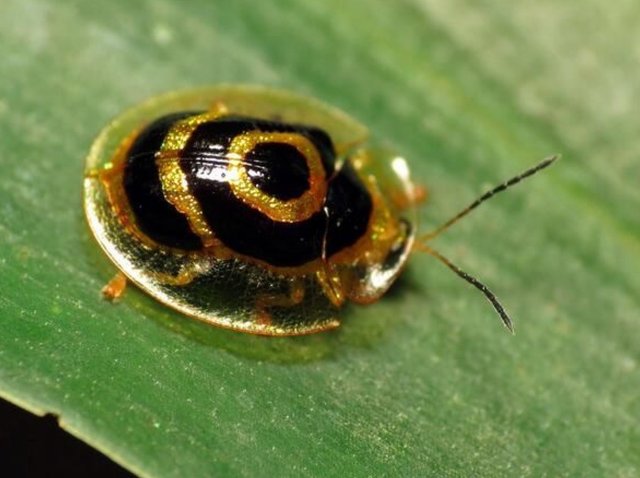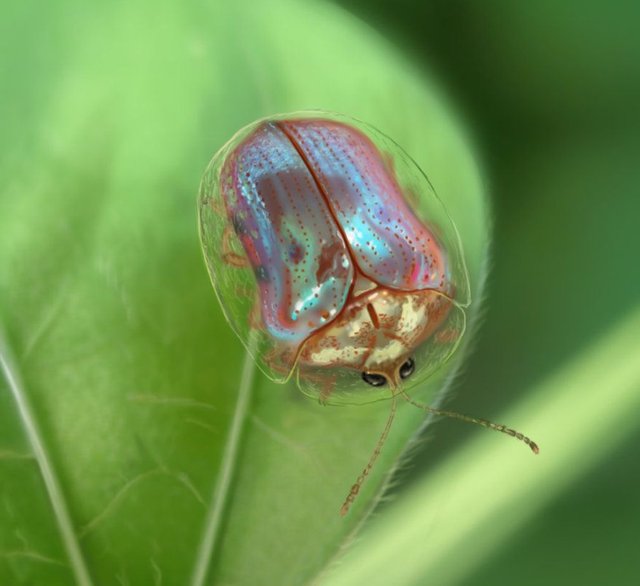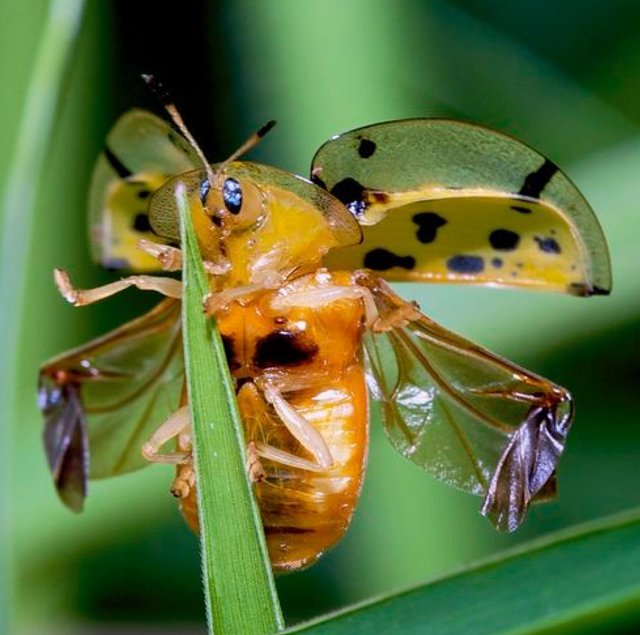golden tortoise beetle (Charidotella bicolor)
- The golden tortoise beetle is distributed widely in eastern North America, west to about Iowa and Texas. It is one of three species of tortoise beetle found in Florida.

- The color changes through its development, during mating, and during times of disturbance, such as when it is touched by a human researcher.
Adults of both species can turn from shiny gold through reddish-brown when disturbed.

Lifecycle:
Female Charidotella sexpunctata lay clusters of eggs on stems and on the undersides of host leaves. A spiny, yellowish or reddish brown larva emerges from its egg in 5 through 10 days. A larva accumulates its shed skins and frass on a structure called an anal fork, which it positions over its body as a fecal shield, evidently hiding the larva from predators. This is usually effective against smaller insect predators such as ants, but not larger ones, such as hemipterans. After two through three weeks, a larval Charidotella sexpunctata becomes a spiny brown frass-covered pupa, and in one through two weeks later it emerges as an adult.

Hi! I am a robot. I just upvoted you! I found similar content that readers might be interested in:
https://en.wikipedia.org/wiki/Golden_tortoise_beetle
Downvoting a post can decrease pending rewards and make it less visible. Common reasons:
Submit